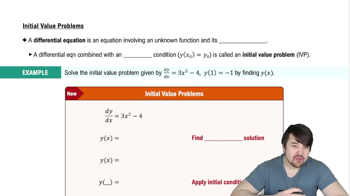Here are the essential concepts you must grasp in order to answer the question correctly.
Limits
A limit is a fundamental concept in calculus that describes the behavior of a function as its input approaches a certain value. In this case, we are interested in the limit of the function cos(2x) / (cos(x) - sin(x)) as x approaches π/4. Understanding limits is crucial for evaluating the function's value at points where it may not be directly computable.
Recommended video:
Trigonometric Functions
Trigonometric functions, such as cosine and sine, are periodic functions that relate angles to ratios of sides in right triangles. In this problem, we are specifically dealing with cos(2x), cos(x), and sin(x). Familiarity with these functions and their properties, including their values at specific angles, is essential for estimating the limit accurately.
Recommended video:
Introduction to Trigonometric Functions
Table of Values
Creating a table of values involves calculating the function's output for various inputs approaching a specific point, in this case, π/4. This method provides a visual representation of how the function behaves near the limit and helps in estimating the limit by observing the trend of the values. It is a practical approach to understanding limits when direct substitution may lead to indeterminate forms.
Recommended video:
 Verified step by step guidance
Verified step by step guidance Verified video answer for a similar problem:
Verified video answer for a similar problem:



 6:47m
6:47m